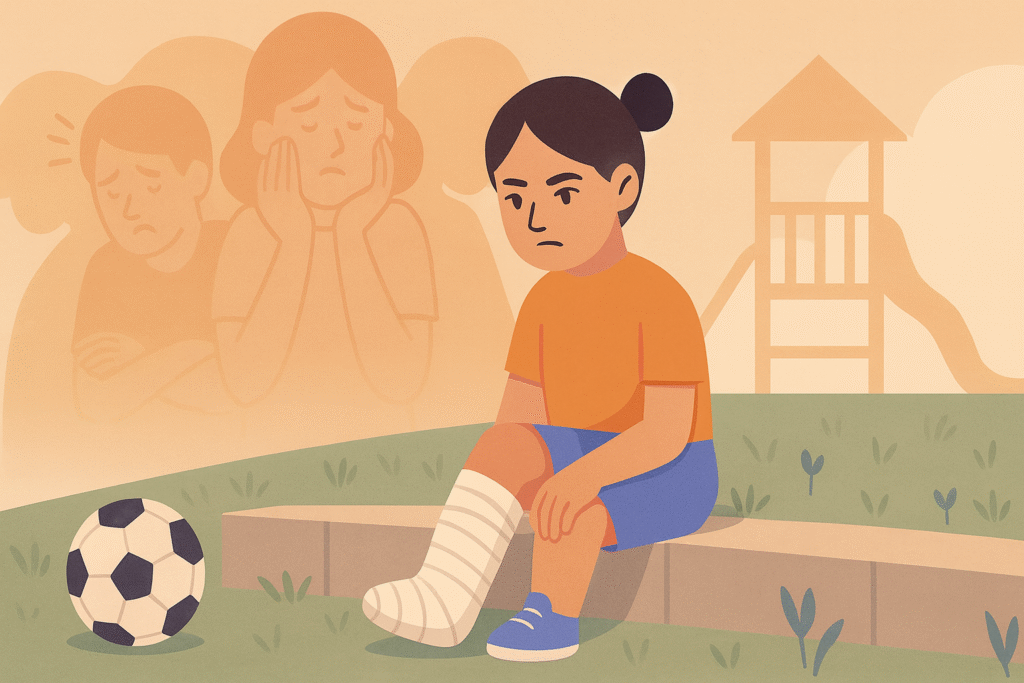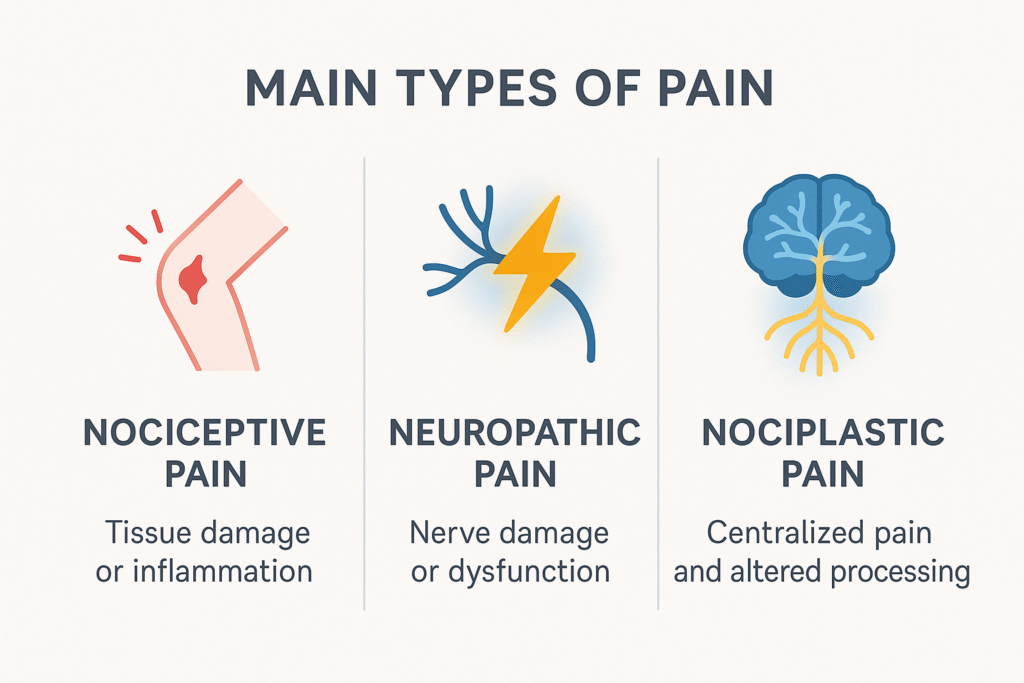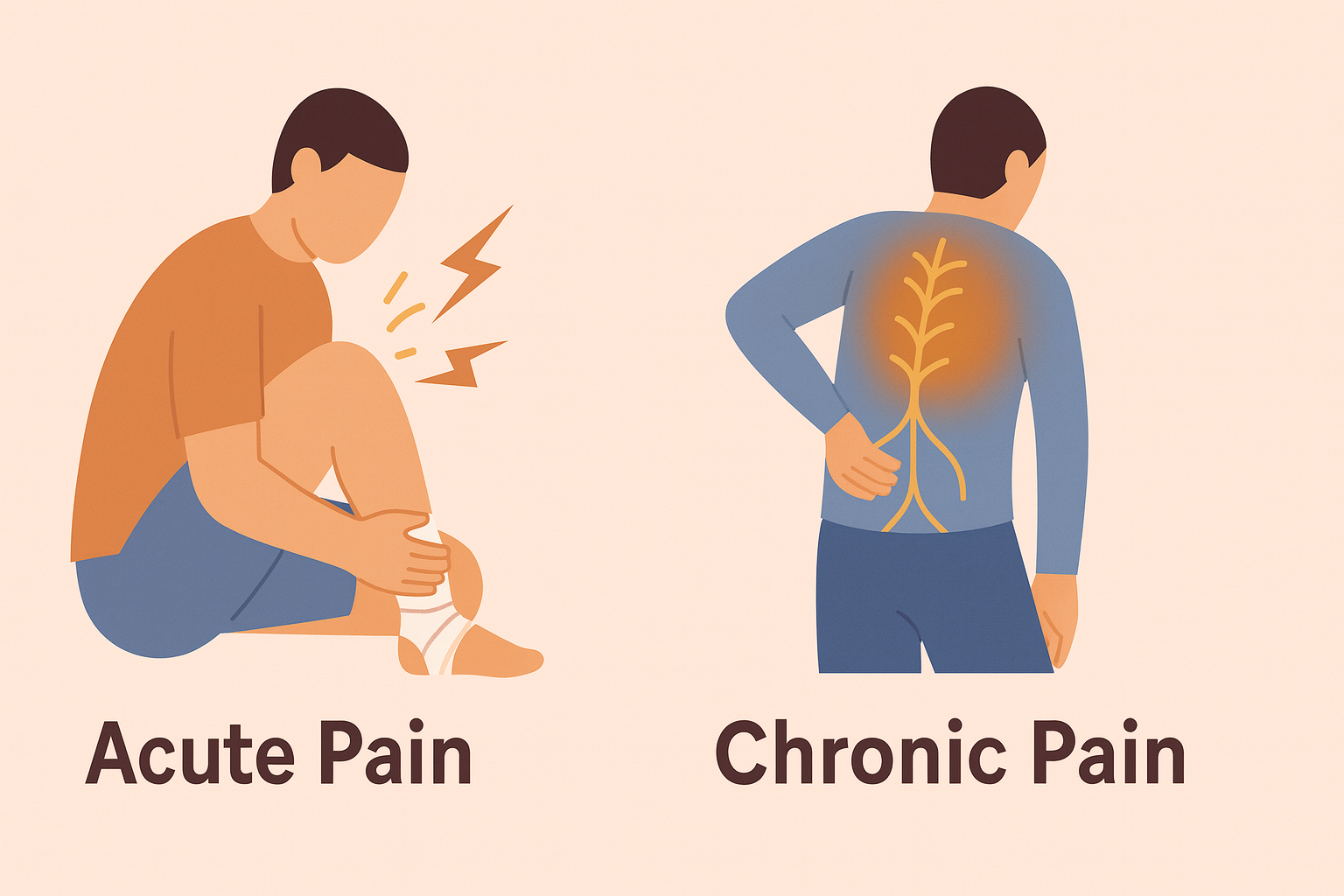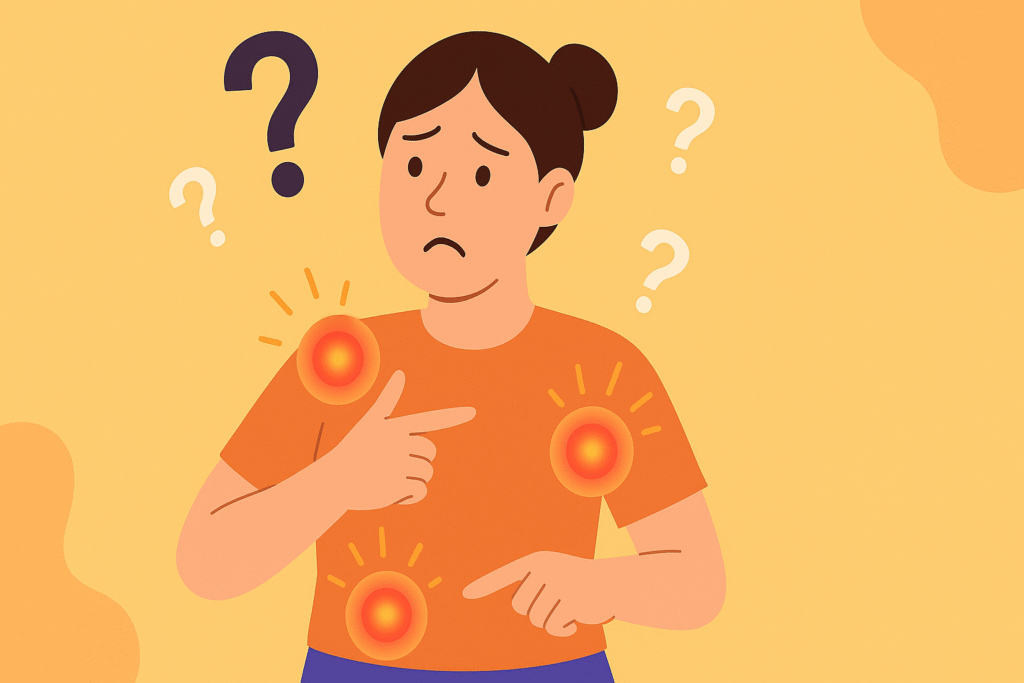What I Wish I Knew About Pain
Pain came to me in so many ways. Wrapped into a stone in the kidneys, slipped through some cracked bones, poured into a year-long infection or waltzed through the opening created by a surgery. Woke me up with a maddening toothache, deafening me with a sharp sound of an otitis or sending me straight to school after the broom of my mom got in touch with my little ass. The broom was small too. I believe pain is something very personal. Blended with you, in all your physical and emotional complexity, it has a unique way of expressing itself. Your past will shape it.
What Pain Carries That Doctors Don’t Always See

I want to share why I believe it is so. When I was nine years old, I broke my leg, playing football. I was the only girl in the team and I had a lot to prove, plus I really loved the game. That summer day, as I was the goalkeeper, I went all in to stop the other kid on his way to score. The player slipped on the ball and fell on my right leg. I heard how it broke and I could see the look on the boy’s face. He was as frightened as I was, minus the pain, of course. My brother carried me on his shoulders to my grandma’s house as she lived closer to the playground. All the way there I cried my eyes out. If you had ever broken a bone, you know how much “fun” it involves.
But, at the same time, my mind was working: now, the people that said I should not play football because I am a girl, will feel entitled to repeat the same. They were right, maybe I am too weak, otherwise, why would my leg hang like that? I felt deeply betrayed by my own body. Also, I will upset my mom. She has enough problems as it is, so I should not give her more. And maybe when I recover, the team will not want me anymore, because why would they?! Mixed in with all of this was a need for sympathy and attention. I spent that entire summer trapped in the cast, refusing to just rest and recover, but instead jumping all around on one leg. I wanted to prove that I can handle myself. After 3 months they cut that thing away and I have recovered, little by little. The bone healed, but the feeling that I had been a burden all this time, lingered.
My point is, along with the pain came all those toxic feelings. Every time I had something else happening to me, the pain was coming accompanied by guilt, shame, frustration and a lot of fury. When a car ran me over, I heard things like: “It was bound to happen. You are too chaotic, rushing all the time, not paying attention. I am not surprised at all.” I was defending myself against these comments, but inside I was feeling a little bit less myself, a little bit angrier. The disappointment with my body was building up too. The inability of it to be perfect, as I needed it to be, was like a deal breaker to me. That’s when the cracks in the mind-body relationship started to show.
After all of this, I wonder: is it the pain that breaks us or our response to it?
Now every time I look back at all these injuries, I somehow understand that the pain was posing an actual question: who are you in my presence?
If I had seen the signs of me resisting the occurrence, not accepting the pain, fighting with the things we cannot control, would my life be different now?
So, I started listening when the pain decided to just stay with me day and night. She did not leave me as she used to: not after 3 months, nor after 3 years.
I slowed down and instead of, why is this not going away? I asked: where is this coming from?
By paying attention to what my body said instead of blaming it, made us a team again.
Listen to it and it might take you out of pain.
What Is Pain Really? How It Works and Why It Stays?
I always had the bad habit of thinking that I was smarter than I actually was. So, to the above question, some years ago I would have answered: “Pain is when it hurts.” And I would also add: “What a stupid thing to ask!”. Let’s just say: I stand corrected.
I hope you are more curious and less infatuated than I was, and want to really understand what pain is.
What needs to be clear right from the beginning is that pain is not just a physical sign, but the way your brain is telling you that something is wrong.
Why is it so important to feel pain?
In order to answer this question, I want to talk to you about a rare genetic disorder where the person is born without the ability to sense physical pain. Their nervous system can detect touch, pressure or temperature, but pain signals are not processed correctly by the brain. So, imagine you cut your finger, but because you do not feel pain, neither you nor your body will consider it a threat. So, pain, above all, is a warning system.
Now that we understand the importance of pain, how does it work?
If you get a cut or a burn, special nerve endings (called nociceptors) send signals to your brain. The brain is the one to decide the level of pain, depending on things like:
- What you’ve been through before and especially in your early life
- How stressed or worried you are right now
- Emotional safety – if you feel supported, balanced, secure
- The environment around you – people, space, situation
Think of it like this: when you feel very tired, do you have the same tolerance to noise? I guess not. So, you won’t have the same reaction to pain when you find yourself tired, in distress, depressed or worried. That is exactly why two people with the same injuries might experience different levels of pain.
One of these two people will heal their tissue, get rid of the pain in a few days or weeks and move on as before.
In the case of the other person, the tissue will, more often than not, heal as well, but the brain will remain stuck in protection mode. And this is when the pain becomes chronic.
The 3 Main Types of Pain (And How to Recognize Yours)

Not all pain is the same. A good medical evaluation can help you understand what type of pain you’re dealing with and guide you toward the right treatment and support. For example, lucky me, I have all three of them and they are all real. One does not exclude the other.
Nociceptive Pain – Tissue-Based Pain
This is the most common type. It happens when there is physical damage to the body. It can be easy to locate, like cuts or joint inflammation, or not so easy when it involves internal organs, like in the case of menstrual cramps.
- What it feels like: acute, sharp, throbbing or aching pain
- Common causes: muscle strain, endometriosis , bruises or cuts, postural back or neck pain, surgical recovery
- Typical Treatment: rest, cold or heat therapy, pain relief medication, gentle movement as healing progresses, proper wound care in case of surgery
Neuropathic Pain – Nerve-Based Pain
This pain is caused by damaged, compressed or irritated nerves. The nerves send wrong signals to the brain, even if there is no injury anymore.
- What it feels like: burning, shooting, tingling, electric shocks, numbing
- Common causes: sciatica, herniated disc, diabetic nerve pain
- Typical Treatment: nerve-calming medications, TENS therapy, rehabilitation
Nociplastic Pain – Brain/Nervous System-Based Pain
In this case, the pain is real, but there’s no clear injury or nerve damage. Like in my case, at the beginning it had a clear cause and it was easy to locate, but eventually intensified and spread. The nervous system got overly sensitive and the brain continued to signal danger, so the pain remained.
- What it feels like: widespread, shifting, persistent pain, diffuse, hard to locate or describe
- Common causes: fibromyalgia, chronic fatigue pain, pelvic pain, tension headaches, irritable bowel syndrome, nonspecific low back pain
- Treatment: education about pain, calming the nervous system, gentle movement, emotional and physical regulation techniques, TENS therapy, Graded Sensory Exposure (GSE)
Acute Pain vs. Chronic Pain – Why Some Pain Heals and Some Lingers

This part can be confusing for many people and that is why I need to explain even further the clear differences so you can spot them.
Acute Pain characteristics:
- Starts suddenly and usually has a clear cause (like an injury or surgery)
- Lasts from a few hours to a few weeks
- Goes away once the body heals
- It’s a normal and helpful warning signal
Chronic Pain characteristics:
- Lasts more than 3 months and is ongoing continuous pain
- May begin after an injury or appear without a clear reason
- Can continue even if the body is healed
- Often involves a sensitive nervous system that stays on alert (central sensitization)
- People suffering from it can often feel anxious, frustrated, demotivated. They struggle to make plans and concentrate, even think
Example:
- A sprained ankle that hurts for a few weeks= acute nociceptive pain
- Sciatica that keeps coming back for months= chronic neuropathic pain
- Widespread back pain with no clear injury= chronic nociplastic pain
Chronic pain works like an alarm that keeps going off, even though the danger has passed. The brain continues to produce pain because it believes you’re still in some kind of threat: physical, emotional or even unconscious.
And here I cannot emphasize enough that stress, trauma, fear or past experiences can make pain worse or last longer.
That was a lot to take in, but I hope it helped you understand the science of pain a little better. There’s much more to explore about central sensitization and the nervous system – I’ll be sharing more soon, so feel free to reach out and ask me anything.
If you got this far,
Get Support in Your Inbox
Subscribe to the newsletter and let me help you turn confusion into clarity. The PDF I have prepared is a guide that will help you organise all the elements of your condition: symptoms, treatments and impact, so you can understand your pain behaviour. This is truly important when it comes to explaining it to healthcare professionals, loved ones and yourself.
“Clinical Clarity Workbook – A map for precise diagnosis“
Until next time,
Alina

